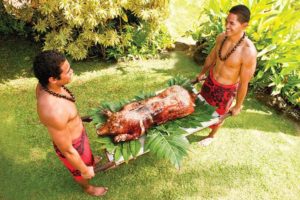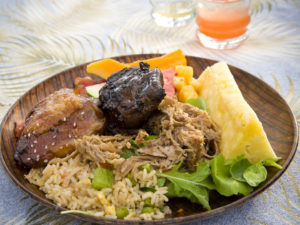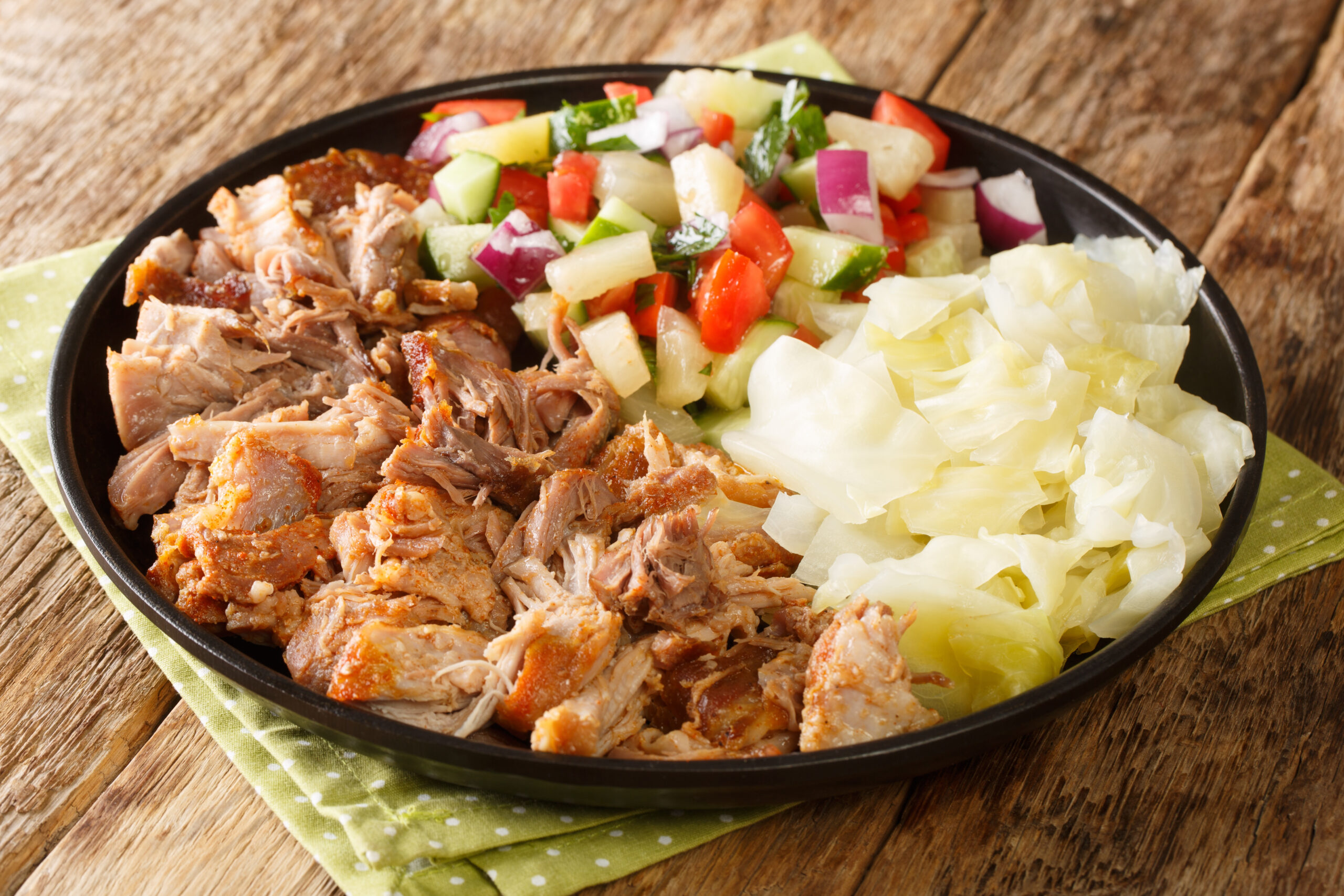What Is Kalua Pig?
by Mark L., September 27, 2019

Among the succulent options of any Hawaiian luau is a shredded pork dish called kalua pig. Most luaus even have an elaborate ceremony surrounding their presentation. But what exactly is a kalua pig? Read on for the history behind this signature Hawaiian dish.
Where did kalua pork come from? How did it become a staple of the luau? While you don’t need to know the history of the dish to enjoy its robust flavors, like just about everything in Hawaii, it has an interesting past that’s worth knowing.
When it comes to the history of kalua pigs, we have to take a long journey back in time. Back, to the time when the earliest settlers were arriving in the Hawaiian Islands. Hawaii is the most remote island grouping in the world and it wasn’t home to a wide variety of wildlife. No land mammals were living in Hawaii until Polynesian travelers crossed the Pacific. As early as 300 CE, they began bringing things like coconut palms, taro, and, as you probably guessed, pigs.

The place of pork on the local menu evolved over the years. For centuries, women were forbidden under the laws known as ai kapu to eat pork, as well as many other foods.Men and women were also not allowed to eat together under the kapu system.
These laws remained in effect until King Kamehameha II did away with the kapu system in 1819. Finally allowing women to enjoy kalua pig, as well as coconut and bananas.
Since kalua pig was one of many “forbidden dishes” served at this first modern luau, it has been a mainstay of these parties ever since.
So, What Makes It Kalua Pork?

Simply put, the word means “(from the) pit,” so basically, any food that has been cooked in an underground oven called an imu is considered “kalua.” The most famous—and most popular dish at luaus—is the kalua pig, but many other foods including fish and vegetables are also cooked in this way.
Virtually all Hawaiian luaus stick to this traditional style of cooking a whole pig. Many luaus turn the opening of the imu into a ceremony that kicks off the party.
From a delicacy forbidden to half the population to becoming a staple of the Hawaiian menu, the kalua pig has gone through quite a journey.
Know Before You Book
Every luau serves kalua pork, but not every luau has an imu on-site or has an imu ceremony. If this is an important feature to you, be sure to check with the venue before you book. We recommend the imu ceremonies at the following luaus:






